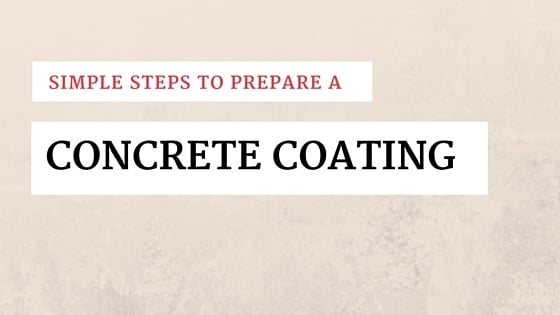 Early failure of concrete coatings is a common occurrence. There are many reasons for premature coating failures, ranging from moisture in the concrete slab and inappropriate surface preparation to mechanical, thermal and chemical factors. Since 80 percent of coating failures are attributed to high moisture content in the slab and dirt accumulation on the surface, adequate surface preparation before the application of a coating system is of paramount importance to improve coating adhesion, enable superior performance and prolong its service life.
Early failure of concrete coatings is a common occurrence. There are many reasons for premature coating failures, ranging from moisture in the concrete slab and inappropriate surface preparation to mechanical, thermal and chemical factors. Since 80 percent of coating failures are attributed to high moisture content in the slab and dirt accumulation on the surface, adequate surface preparation before the application of a coating system is of paramount importance to improve coating adhesion, enable superior performance and prolong its service life.
Correct surface preparation is an arduous, time-consuming task that many contractors complete superficially or overlook altogether. To ensure proper surface preparation, below you can find the steps a concrete floor coating installer should take prior to applying the coating.
Inspect the concrete slab
Whilst you’re responsible for providing a substrate that’s clean, level, flat, free of defects and pitched to specifications, the contractor must examine the slab to determine its general condition. If you have old concrete flooring, it’s imperative to remove all contaminants, including dust, dirt, grease and wax, and solve problems like cracks and unevenness prior to the installation of the concrete coating. If a fresh layer of concrete has been laid, the contractor must ensure that it’s ready to receive the coating system.
Test the slab for moisture content
When coatings are applied to damp concrete, the moisture gets trapped inside the slab, dissolving the salts in the concrete and becoming alkaline. The alkaline moisture will attack both the slab and the coating, leading to the premature failure of both systems. If there is no membrane separating the slab from the soil, more moisture can accumulate in the slab and generate hydrostatic pressure. The pressure will eventually force the moisture up through the slab, causing bubbles, blisters and other defects in the coating. To prevent early deterioration of concrete and coating systems due to excessive moisture, experienced professionals place waterproof membranes underneath the slab, allow the concrete to cure and dry for the time frame specified and use the calcium chloride test to determine the actual slab moisture content before the application of floor finishes.
Ensure proper adhesion
To ensure proper coating adhesion, dirt and/or existing concrete coatings must be removed and the surface of the slab roughened. For this, professionals use different mechanical or chemical methods, such as steel shotblasting, diamond grinding and etching. Steel shotblasting implies the use of steel shot, propelled at high speed onto the surface; this method is generally used to remove previous coatings and roughen concrete surfaces. Diamond grinding is used to remove deposits or smooth surface profiles in preparation for the application of a new concrete coating. Depending on the condition of the surface, etching can be done with a solution made from phosphoric or muriatic acid and water, in a 3:1 ratio. The water drop penetration test should also be performed to ensure the concrete is ready for the application of the coating.
Prime the surface
Once the surface is clean and dry, an appropriate primer should be applied. To choose the right primer, you should consider the surface preparation method (mechanically prepared slabs need different primers from chemically treated surfaces), the type of coating and working conditions expected. Depending on the porosity of the surface, it may be necessary to apply two coats of primer.
Should you have any questions about concrete floor preparation for coating application, please don’t hesitate to contact our experts at Performance Painting. As our professionals have extensive experience in installing, inspecting, testing, maintaining and repairing all kinds of coating systems, they can help you get the most out of your concrete coating.






